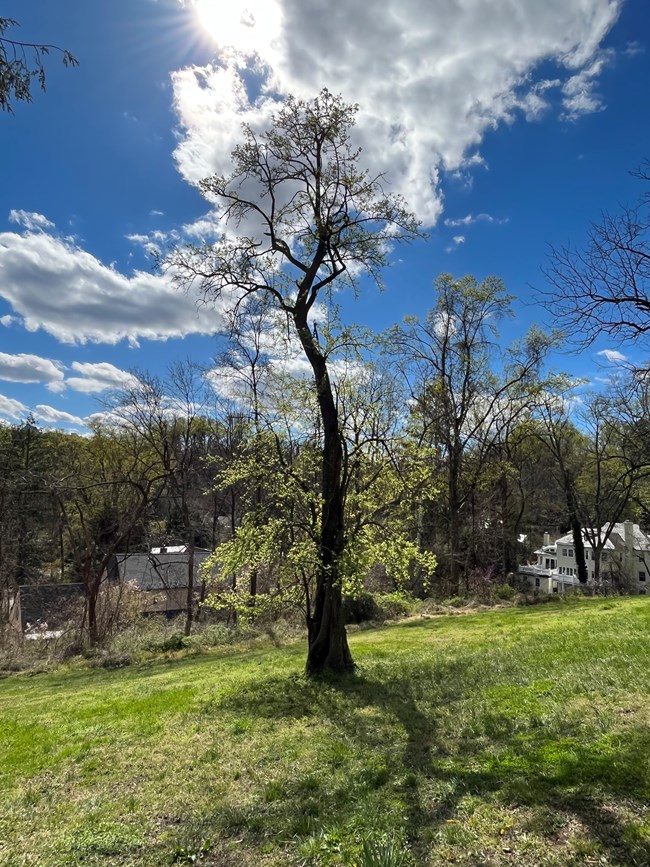Last updated: October 20, 2022
Article
Orchard History: Fruit Diversification and Migration, 1801-1880
This article is an excerpt from Part I, Chapter 2 of Fruitful Legacy: A Historic Context of Orchards in the United States, with Technical Information for Registering Orchards in the National Register of Historic Places.
American fruit varieties, collectors, connoisseurs and entrepreneurs
The 1800s are known as the "golden age of pomology," the period in which pomology -- the science and practice of fruit growing -- produced hundreds of new and diverse varieties of fruit. By the end of the 1870s, commercial orchards and farm orchards had been planted throughout the 48 contiguous states. Many thousands of true varieties of fruits were planted, with the greatest numbers of apple and peach being American varieties, and the majority of pear, cherry, and plum being European. Many farmers in the east had converted their fields from cereal grains and vegetables to orchards. By this time, most orchard fruits were grown for human consumption as fresh fruit, as other commodities were replacing the use of seedling fruits for cider and livestock feed.

NPS

NPS
By the end of the 1801-1880 period in the West, many areas that were newly settled by European Americans were immediately developed as commercial orchards. Orchards were laid out with relatively wide spacing between trees, typically 30 feet square for apple and pear, and 16 to 20 feet square for peach, plum, and cherry. The trees were grafted close to the ground and were allowed to develop tall trunks. A typical orchard tree had a large, unpruned canopy and, without fruit thinning by the orchardist, it would bear a good crop only every other year.
Dwarf apple and pear trees were available through the nursery trade, which had spread to every larger city in the country. However, dwarf trees were generally found only in fruit gardens, which remained distinct from farm orchards or commercial orchards. Seedling fruit trees were still being sown in the West, though even the most remote farm orchards were typically laid out with a handful of true varieties in addition to seedling trees to provide some good fresh fruit.
Ornamental plants such as rose, lilac, mock orange, and spirea were not available from plant nurseries until the 1860s. Until this time, American horticulture was defined by the growing of fruits, and fruit trees were grown for their ornamental qualities as well as for their bounty.
The threat from pests and diseases was formally realized as insects and pathogens traveled west with migrating people and new agricultural settlement. Pests that had been noted in the late 1700s in New York State had arrived in the Pacific Northwest by the 1880s. Fire blight had decimated pear orchards in the Northeast, peach yellows had infected peach orchards of the east and south, and codling moth and apple scab had blighted the apple orchards of Missouri, Kansas, Arkansas, Iowa, Mississippi, and Texas. Pest control methods were rudimentary, and at best, were based on notions of sanitary hygiene rather than science. Few alternatives for effective pest management were available.

NPS / S. Dolan
